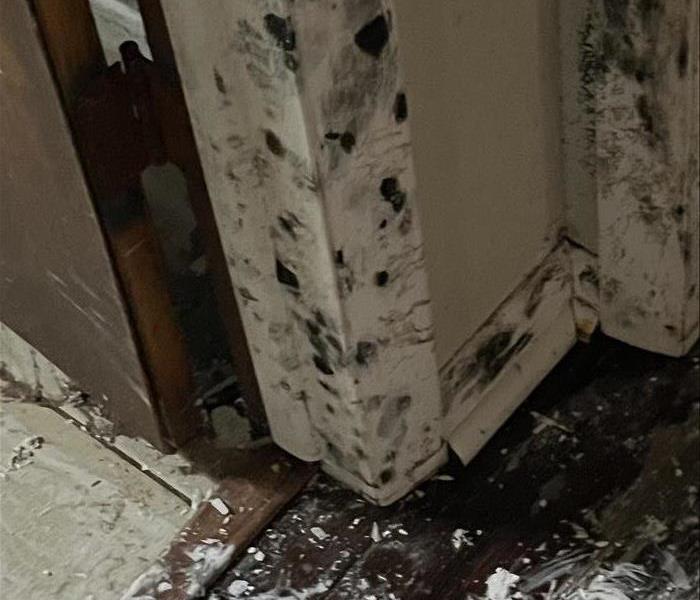Recent Posts
Understanding the Leading Causes of Home Fires: Prevention and Safety Tips
12/10/2024 (Permalink)
Home fires are one of the most devastating events a family can experience. Not only do they threaten lives, but they also cause significant damage to property, often leaving homeowners with the difficult task of recovery and rebuilding. While fire hazards exist in every home, many fires can be prevented through awareness and safety measures. Understanding the leading causes of home fires can help you take proactive steps to protect your household.
1. Cooking Accidents
Unattended cooking is the number one cause of home fires. The kitchen is full of fire hazards, from hot grease to stovetops and ovens. A momentary distraction while cooking can lead to disastrous consequences. Grease fires, in particular, can escalate quickly and are challenging to put out if handled improperly. It's crucial never to leave cooking food unattended and always keep a fire extinguisher nearby.
Prevention Tips:
- Stay in the kitchen while cooking, especially when frying or grilling.
- Keep flammable items, like towels and paper products, away from the stovetop.
- If a grease fire occurs, never use water to put it out. Instead, cover the flames with a lid or use a fire extinguisher.
2. Heating Equipment
As temperatures drop, the use of space heaters and fireplaces increases, making heating equipment a leading cause of home fires during the winter months. Space heaters, when placed too close to flammable materials like furniture, curtains, or bedding, can ignite a fire. Similarly, improperly maintained fireplaces and chimneys can cause dangerous flare-ups.
Prevention Tips:
- Keep anything that can burn at least three feet away from heating equipment.
- Turn off space heaters when you leave the room or go to bed.
- Have your chimney inspected and cleaned annually to prevent buildup of creosote, which can cause chimney fires.
3. Electrical Fires
Electrical malfunctions, such as faulty wiring, overloaded circuits, and outdated electrical systems, are common culprits of home fires. Older homes with outdated wiring or the use of extension cords for permanent power sources increase the risk of electrical fires.
Prevention Tips:
- Hire a licensed electrician to inspect your home's wiring, especially if it's older or you're experiencing electrical issues.
- Avoid overloading outlets and circuits, and unplug appliances when they're not in use.
- Use power strips with built-in surge protectors for multiple electronics.
4. Smoking Materials
Smoking inside the home is a significant fire hazard, especially when cigarettes are not properly extinguished. Fires started by smoking materials often occur in bedrooms and living rooms where people may fall asleep with lit cigarettes.
Prevention Tips:
- Smoke outside the home to minimize the risk of fire.
- Use deep, sturdy ashtrays to prevent cigarettes from falling onto flammable materials.
- Make sure all smoking materials are completely extinguished before disposal.
5. Candles
While candles create a cozy atmosphere, they are also a common cause of home fires. When left unattended or placed near flammable materials, candles can easily ignite a fire.
Prevention Tips:
- Never leave a burning candle unattended.
- Keep candles at least one foot away from anything that can burn.
- Consider using battery-operated flameless candles for added safety.
While home fires can have devastating consequences, most are preventable with the right precautions. By understanding and addressing these common fire hazards, you can significantly reduce the risk of a fire in your home. For those who do experience fire damage, professional restoration companies like SERVPRO of Bel Air/ West Hollywood are available to help with fire damage recovery, offering expert services to restore your home and belongings to pre-fire condition. Prevention is key, but when the worst happens, it’s important to have a trusted team ready to help you recover
Mold in Commercial Buildings: Protecting Your Business from Damage
11/13/2024 (Permalink)
Mold in commercial buildings is more than just an unsightly problem; it can have serious implications for business operations, property value, and overall employee and customer experience. Left unchecked, mold growth can cause structural damage, create unpleasant odors, and lead to costly repairs. Commercial building owners and managers must prioritize mold prevention and remediation to protect their business investments.
SERVPRO of Bel Air/ West Hollywood, a leader in mold remediation services, is well-equipped to help businesses tackle mold issues and prevent them from causing long-term damage. Here's a look at how mold impacts commercial buildings and the solutions SERVPRO® offers.
How Mold Develops in Commercial Buildings
Mold thrives in environments with excess moisture, such as areas affected by water leaks, high humidity, or poor ventilation. In commercial buildings, mold often develops in places that may go unnoticed, such as basements, crawl spaces, behind walls, or in HVAC systems.
Common causes of mold in commercial buildings include:
- Leaky pipes or plumbing issues: Undetected leaks can provide the moisture mold needs to grow.
- Roof or window leaks: Water can seep into the building through damaged roofs or poorly sealed windows.
- Poor ventilation: In large commercial spaces, inadequate ventilation systems can trap moisture in the air.
- HVAC systems: Air ducts and HVAC systems that are not regularly cleaned or maintained can become breeding grounds for mold spores.
- Flooding or water damage: If water damage from storms or floods is not properly mitigated, mold can quickly take hold.
The Impact of Mold on Business
- Structural Damage: Mold can cause severe damage to the structure of a commercial building. It can eat away at materials like wood, drywall, and insulation, weakening the integrity of walls, floors, and ceilings. Over time, this damage can require expensive repairs and even lead to parts of the building being deemed unsafe for use.
- Operational Disruptions: Mold infestations often require businesses to temporarily close or limit access to certain areas of the building while remediation is underway. This can disrupt daily operations, leading to lost productivity and revenue.
- Damage to Property and Inventory: In retail or warehouse settings, mold can affect stored goods and inventory, leading to spoilage or loss. This not only impacts the bottom line but also affects customer satisfaction.
- Unpleasant Odors and Poor Air Quality: Mold often produces musty odors, which can be off-putting to both employees and customers. Poor indoor air quality due to mold spores can create an uncomfortable environment and harm a business's reputation.
- Legal and Compliance Issues: Building owners are responsible for maintaining a safe and habitable environment for tenants and employees. Failing to address mold issues can result in legal liability, fines, or non-compliance with building codes and regulations.
Preventing Mold in Commercial Buildings
To prevent mold from becoming a costly problem, commercial building owners should prioritize maintenance and moisture control. Key preventive measures include:
- Routine Inspections: Regularly check for signs of water leaks, damp areas, and humidity issues. Early detection is critical to preventing mold growth.
- Proper Ventilation: Ensure HVAC systems are properly maintained and that air flows freely throughout the building. This can help prevent moisture buildup.
- Humidity Control: Keep indoor humidity levels below 60% using dehumidifiers and monitoring systems in high-moisture areas.
- Prompt Water Damage Response: Address any water damage immediately. Businesses should work with professionals like SERVPRO to properly mitigate water damage and prevent mold from developing.
- HVAC Maintenance: Regularly clean and service HVAC systems to prevent mold spores from circulating through the air.
SERVPRO: The Mold Remediation Experts
When mold is discovered in a commercial building, it’s essential to act quickly to prevent further damage. SERVPRO specializes in mold remediation, providing businesses with expert solutions to identify, contain, and eliminate mold problems.
SERVPRO uses advanced techniques to thoroughly clean and restore affected areas, ensuring mold doesn’t return. Their professional team also helps identify the root cause of mold, such as water leaks or humidity issues, to ensure long-term prevention.
By working with SERVPRO, business owners can minimize downtime, protect their property. Don't let mold jeopardize your business—call SERVPRO of Bel Air/ West Hollywood for expert mold remediation services tailored to the unique needs of commercial properties.
How to Locate the Main Water Shut Off Valve
10/16/2024 (Permalink)
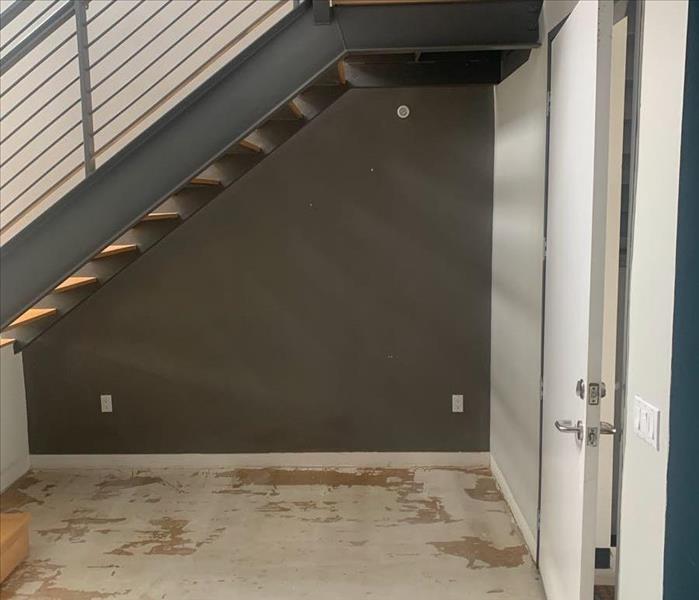 Knowing how to locate and operate your main water shut-off valve is an essential skill that every homeowner should master.
Knowing how to locate and operate your main water shut-off valve is an essential skill that every homeowner should master.
Knowing how to locate your home's main water shut-off valve is crucial for every homeowner. In the event of a plumbing emergency, such as a burst pipe or a major leak, quickly shutting off the water supply can prevent significant water damage. In fact, the Insurance Information Institute reports that water damage is the second most common homeowners' insurance claim, accounting for about 24% of all claims in the U.S. each year. Understanding how to find and operate your main water shut-off valve is an essential skill that can save you time, money, and stress. source.
Why Knowing the Location of Your Main Water Shut Off Valve Matters
The main water shut-off valve is the gatekeeper of your home's water supply. When this valve is closed, it cuts off all water flow into your home. In emergencies like a burst pipe, every second counts, and being able to quickly locate and shut off this valve can make the difference between a minor inconvenience and a costly disaster.
Additionally, knowing the location of your main water shut-off valve is essential for routine home maintenance. Whether you're fixing a leaky faucet or upgrading your plumbing system, you'll need to shut off the water to work safely.
Where to Find the Main Water Shut Off Valve in Your Home
The location of your main water shut-off valve can vary depending on your home's age, layout, and plumbing system. Here are the most common places to check:
1. Near the Water Meter
In many homes, the main water shut-off valve is located near the water meter, which measures the amount of water your household uses. The water meter is typically found outside the house, either near the street or sidewalk, often in a concrete box set into the ground. Look inside the meter box for a valve on the pipe leading into your home. This is often the main shut-off valve.
2. Inside the Basement or Crawl Space
In homes with basements or crawl spaces, the main water shut-off valve is usually located on the wall closest to the street. Look for a pipe entering your home from outside, leading to a valve. This valve is often placed just before the pipe branches off to distribute water throughout your house.
3. In a Utility Room
Some homes, particularly those without basements, may have the main shut-off valve in a utility room or laundry room. Check the walls near your water heater, furnace, or other major appliances for a valve attached to a pipe entering from outside.
4. Near the Kitchen or Bathroom
In some cases, the main water shut-off valve may be located near the kitchen or bathroom, especially in homes where the plumbing is centrally located. Look under the kitchen sink or behind the bathroom fixtures for a valve connected to a main water line.
5. Outside Near an Exterior Wall
In warmer climates where pipes are less likely to freeze, the main water shut-off valve might be located outside the house. Look for it along an exterior wall, often near a hose bib or another outdoor spigot.
How to Identify the Main Water Shut Off Valve
Once you've found a valve, you need to confirm that it's the main water shut-off valve and not a shut-off valve for a specific fixture or appliance. Here are some ways to identify the main shut-off valve:
- Check the Size of the Pipe: The main water line entering your home is typically a larger pipe, usually 3/4 inch to 1 inch in diameter. If the valve is attached to a pipe of this size, it’s likely the main shut-off valve.
- Look for a Handle or Wheel: The main water shut-off valve usually has a handle or a round wheel that you turn to shut off the water. The handle is often colored red or blue and may be labeled as the main valve.
- Test the Valve: To confirm that you've found the main shut-off valve, turn the handle or wheel to the right (clockwise) to close it. Then check if the water stops flowing from all faucets in your home. If it does, you've found the correct valve.
Tips for Maintaining and Using the Main Water Shut Off Valve
Now that you know where to find your main water shut-off valve, it's important to keep it in good working condition. Here are some maintenance tips:
- Test the Valve Regularly: At least once a year, turn the valve off and on to ensure it’s not stuck or difficult to operate. This practice will keep the valve functional and help you remember its location.
- Label the Valve: Use a tag or label to mark the valve as the main water shut-off. This can be especially helpful in an emergency, particularly if someone else needs to find it quickly.
- Clear the Area: Ensure that the area around the valve is clear of any obstructions, such as boxes, tools, or debris. This will allow you easy access in case of an emergency.
What to Do in an Emergency
In the event of a water-related emergency, the first thing you should do is locate and shut off the main water valve. This will stop the flow of water into your home and give you time to assess the situation. After turning off the valve, open all the faucets in your home to drain the remaining water from the pipes. Then, contact a professional plumber or a water damage restoration company like SERVPRO® of Bel Air/West Hollywood to address the issue.
Knowing how to locate and operate your main water shut-off valve is an essential skill that every homeowner should master. By taking the time to find your valve and ensure it's in good working condition, you can prevent significant water damage and protect your home from costly repairs. Whether it's a routine plumbing job or an unexpected emergency, being prepared can make all the difference. For more expert advice and water damage restoration services, contact SERVPRO of Bel Air/West Hollywood today.
Assessing Wind Damage and Its Aftermath: How SERVPRO® Can Help
9/10/2024 (Permalink)
Wind damage is a common consequence of severe weather events such as hurricanes, tornadoes, and powerful storms. The impact of high winds can be devastating, causing structural damage, uprooting trees, and scattering debris. Assessing wind damage promptly and thoroughly is essential to initiate repairs and ensure safety. In this blog, we’ll explore the process of assessing wind damage, the potential aftermath, and how SERVPRO® can assist in the restoration process.
Identifying Wind Damage
- Roof Damage: High winds can lift and remove shingles, tiles, or metal roofing, exposing the underlying structure to the elements. Look for missing or damaged roofing materials, and check for leaks or water stains inside the attic.
- Window and Door Damage: Strong winds can shatter windows, bend frames, and damage doors. Inspect windows and doors for cracks, broken glass, and alignment issues.
- Exterior Walls and Siding: Wind can strip away siding, damage brickwork, and create cracks in walls. Check for loose or missing siding and any visible cracks or holes in the exterior walls.
- Fallen Trees and Debris: Uprooted trees and broken branches can cause significant damage to roofs, walls, and vehicles. Survey your property for fallen trees, branches, and other debris.
- Gutters and Downspouts: High winds can dislodge gutters and downspouts, affecting water drainage. Inspect these components for damage and ensure they are securely attached.
The Aftermath of Wind Damage
- Water Infiltration: Damaged roofs, windows, and walls can allow water to enter your home, leading to water damage, mold growth, and structural deterioration.
- Structural Compromise: Severe wind damage can weaken the structural integrity of your home, making it unsafe. Immediate assessment and repair are necessary to prevent further damage or collapse.
- Power Outages and Utility Damage: Downed power lines and damaged utility poles can cause extended power outages and disrupt essential services. Report any downed lines to your utility company and avoid contact.
- Health Hazards: Debris, standing water, and mold can pose health risks. It’s essential to address these hazards promptly to ensure a safe living environment.
Steps to Take After Wind Damage
- Ensure Safety: Prioritize safety by avoiding areas with visible damage, downed power lines, and unstable structures. If necessary, evacuate the property until it is deemed safe.
- Document the Damage: Take photos and videos of the damage for insurance purposes. Documenting the damage thoroughly can support your insurance claim and help with the restoration process.
- Contact Your Insurance Company: Notify your insurance company about the damage and initiate the claims process. Provide them with the documented evidence and follow their instructions for filing a claim.
- Temporary Repairs: If safe to do so, perform temporary repairs to prevent further damage, such as tarping a damaged roof or boarding up broken windows.
How SERVPRO Can Help
- Comprehensive Damage Assessment: SERVPRO professionals conduct thorough inspections to assess the full extent of wind damage, identifying both visible and hidden issues.
- Emergency Services: SERVPRO offers 24/7 emergency response to secure your property and prevent further damage. This includes roof tarping, board-up services, and debris removal.
- Water Damage Restoration: If water has infiltrated your home due to wind damage, SERVPRO’s water damage restoration services will address the issue promptly. This includes water extraction, drying, and mold remediation.
- Structural Repairs: SERVPRO provides comprehensive repair services to restore the structural integrity of your home, including roofing, siding, window, and door repairs.
- Complete Restoration: From initial assessment to final repairs, SERVPRO offers a full range of services to restore your home to its pre-damage condition, ensuring a seamless recovery process.
Assessing wind damage and addressing its aftermath promptly is crucial to ensure the safety and integrity of your home. Trust SERVPRO of Bel Air/ West Hollywood to help you navigate the aftermath of wind damage and restore your home to its original state.
Why Fire Alarm Systems Are Crucial for Safety and Business Continuity in Commercial Buildings
8/28/2024 (Permalink)
Fire safety is a critical aspect of maintaining any commercial building. One of the most vital components of a comprehensive fire safety plan is a reliable fire alarm system. These systems play a crucial role in protecting lives, property, and ensuring business continuity. In this blog, we will explore the importance of fire alarm systems in commercial buildings and highlight how SERVPRO® can assist with fire restoration and recovery in the event of a fire.
Why Fire Alarm Systems Are Essential in Commercial Buildings
- Early Detection and Warning
- Immediate Alert: Fire alarm systems are designed to detect smoke, heat, or fire at the earliest stages. Early detection is crucial as it provides occupants with the maximum amount of time to evacuate safely.
- Automatic Response: Modern fire alarm systems can be connected to emergency services, ensuring that firefighters are alerted and dispatched to the scene without delay.
- Life Safety
- Evacuation: Fire alarm systems provide audible and visual warnings, guiding occupants to evacuate promptly. This is especially important in commercial buildings where many people may be present.
- Prevention of Panic: Structured evacuation protocols triggered by fire alarms help prevent panic, ensuring orderly and safe exits.
- Property Protection
- Minimize Damage: Early detection and prompt response can significantly reduce the extent of fire damage to the building and its contents.
- Cost Savings: By minimizing damage, fire alarm systems help reduce repair and restoration costs, as well as potential downtime for the business.
- Regulatory Compliance
- Legal Requirements: Many jurisdictions have strict fire safety regulations that require commercial buildings to have functioning fire alarm systems. Compliance with these regulations is essential to avoid fines and legal issues.
- Insurance: Insurance companies often mandate fire alarm systems for commercial properties. Properly installed and maintained systems can also lead to lower insurance premiums.
- Enhanced Business Continuity
- Reduced Downtime: A well-maintained fire alarm system helps in quickly addressing fire incidents, allowing businesses to resume operations sooner.
- Protection of Assets: Safeguarding valuable assets, including equipment, data, and inventory, is crucial for maintaining business continuity.
Components of a Fire Alarm System
- Smoke Detectors: Detect smoke particles and trigger the alarm.
- Heat Detectors: Sense significant increases in temperature and activate the alarm.
- Manual Call Points: Allow occupants to manually trigger the alarm in case of fire.
- Alarm Sounders and Flashers: Provide audible and visual warnings to alert occupants.
- Control Panel: The central hub that monitors inputs from detectors and activates alarms.
- Notification Devices: Includes alarms, strobes, and speakers to guide evacuation.
Maintenance and Regular Testing
- Routine Inspections: Regular inspections and maintenance are essential to ensure fire alarm systems function correctly.
- Professional Servicing: Engaging professional services for routine checks and servicing helps in maintaining the system's reliability.
SERVPRO’s Role in Fire Restoration
- Rapid Response: In the event of a fire, SERVPRO provides a swift response to minimize damage and begin the restoration process.
- Comprehensive Assessment: SERVPRO professionals conduct thorough assessments of fire-damaged areas to develop effective restoration plans.
- Smoke and Soot Removal: Using advanced equipment and techniques, SERVPRO removes smoke and soot from surfaces, ensuring a clean and safe environment.
- Odor Removal: SERVPRO employs specialized deodorization methods to eliminate lingering smoke odors.
- Reconstruction Services: From minor repairs to major reconstruction, SERVPRO offers comprehensive restoration services to return the building to its pre-fire condition.
Fire alarm systems are indispensable for ensuring the safety of occupants and the protection of property in commercial buildings. They provide early detection, facilitate safe evacuations, and help minimize fire damage. Regular maintenance and professional servicing are essential to keep these systems in optimal working condition. In the unfortunate event of a fire, professional restoration services like SERVPRO of Bel Air/ West Hollywood play a crucial role in efficiently restoring the property and ensuring business continuity. Trust SERVPRO for expert fire restoration services to help your business recover swiftly and safely.
Everything You Need to Know About Mold in Crawl Spaces
7/17/2024 (Permalink)
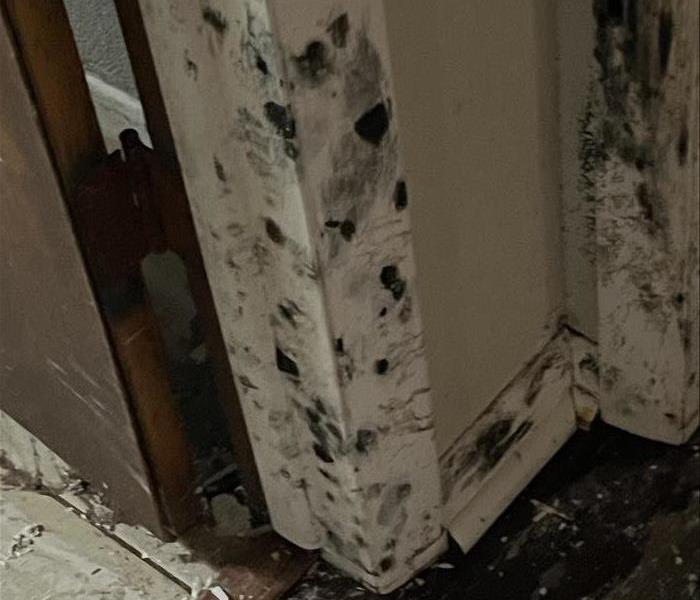 Mold in your crawl space can cause significant property damage.
Mold in your crawl space can cause significant property damage.
Mold in your crawl space is a serious problem that can lead to property damage and unpleasant odors in your home. Addressing this issue promptly is crucial to maintaining a healthy and safe living environment. In this blog, we'll explore how mold gets into crawl spaces, how to prevent it, and the steps you can take to remove it if it appears.
How Does Mold Get Into Crawl Spaces?
Crawl spaces are prone to mold growth due to their dark, damp, and poorly ventilated nature. Mold spores can easily find their way into your crawl space through various means, such as:
- Moisture Infiltration
Water can enter crawl spaces through cracks in the foundation, plumbing leaks, or from the ground if the area is not properly sealed. Excess moisture creates the perfect environment for mold to thrive.
- Poor Ventilation
Inadequate ventilation in crawl spaces traps moisture, creating a humid environment that encourages mold growth. Without proper airflow, the area remains damp, providing a breeding ground for mold.
- Organic Materials
Crawl spaces often contain organic materials like wood and insulation, which can serve as food sources for mold. When these materials become damp, mold can quickly colonize them.
Preventing Mold in Crawl Spaces
Preventing mold growth in your crawl space involves controlling moisture and ensuring proper ventilation. Here are some effective strategies:
- Control Moisture
Ensure that your crawl space remains dry by addressing any water intrusion issues. This includes fixing leaks, sealing foundation cracks, and ensuring proper drainage around your home's perimeter. Installing a vapor barrier on the crawl space floor can also help prevent moisture from seeping in from the ground.
- Improve Ventilation
Proper ventilation is crucial in preventing mold growth. Install vents or exhaust fans to promote airflow and reduce humidity levels. Ensuring that your crawl space has adequate ventilation helps to keep the area dry and mold-free.
- Use a Dehumidifier
If your crawl space is prone to high humidity, consider using a dehumidifier. This device can help maintain low humidity levels, making it difficult for mold to grow. Regularly monitor and adjust the dehumidifier to ensure optimal performance.
- Insulate Your Crawl Space
Proper insulation can help control temperature and moisture levels in your crawl space. Use moisture-resistant insulation materials to reduce the risk of mold growth. Ensure that insulation is installed correctly to avoid trapping moisture.
Removing Mold from Crawl Spaces
If you discover mold in your crawl space, it's important to act quickly to remove it. Here are the steps to effectively eliminate mold:
- Wear Protective Gear
Before starting the cleanup process, wear protective gear such as gloves, goggles, and a mask to avoid exposure to mold spores.
- Identify and Fix Moisture Sources
Identify and repair any sources of moisture to prevent future mold growth. This may involve fixing leaks, sealing cracks, and improving drainage.
- Clean the Affected Area
Use a mold removal solution to clean the affected areas. You can use a mixture of water and detergent or a commercial mold cleaner. Scrub the moldy surfaces thoroughly to remove all traces of mold.
- Dispose of Contaminated Materials
Remove and dispose of any contaminated materials such as insulation or wood that cannot be cleaned effectively. Replace these materials with mold-resistant alternatives.
- Dry the Area Completely
Ensure that the crawl space is completely dry after cleaning. Use fans or dehumidifiers to speed up the drying process. Properly drying the area is crucial to prevent mold from returning.
- Monitor and Maintain
Regularly inspect your crawl space for signs of moisture and mold. Implement preventive measures and conduct routine maintenance to keep the area dry and mold-free.
Mold in your crawl space can cause significant property damage and create an unpleasant environment in your home. By understanding how mold gets into crawl spaces and taking proactive steps to prevent it, you can protect your home and ensure a safe living space. If you discover mold in your crawl space, act quickly to remove it and address the underlying moisture issues. For professional assistance, consider contacting a mold remediation service like SERVPRO® to ensure thorough and effective mold removal.
Roof Leaks and Water Damage: Inspection and Repairs
6/12/2024 (Permalink)
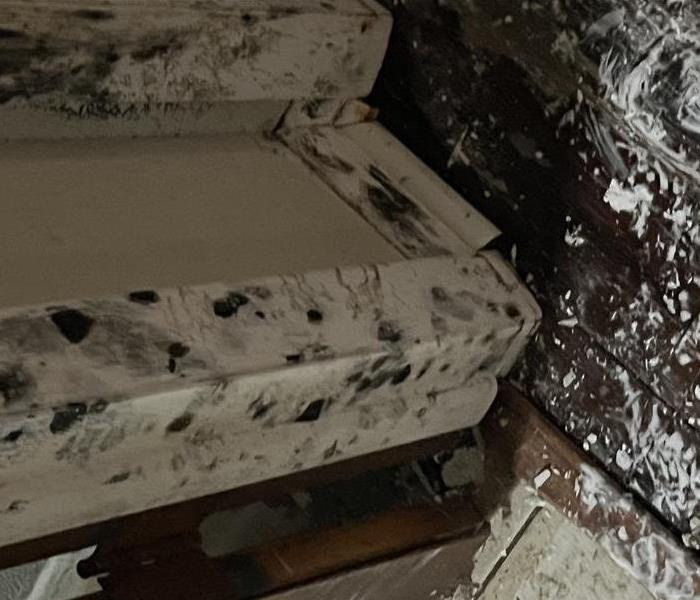 Our team is on top of the inspection and restoration process after roof leaks and water damage!
Our team is on top of the inspection and restoration process after roof leaks and water damage!
When it comes to protecting your property from water damage, one of the most vulnerable areas is the roof. Roof leaks can lead to a host of issues, including water damage to your ceilings, walls, and belongings. It is essential to address roof leaks promptly to prevent further damage and costly repairs. In this blog, we will discuss the importance of inspecting and repairing roof leaks to protect your property.
Detection of Roof Leaks
Detecting roof leaks early is crucial to preventing extensive water damage. Here are some signs that may indicate a roof leak:
- Water Stains on Ceilings and Walls: Discoloration or water stains on your ceilings and walls are a clear indicator of a roof leak.
- Dripping Water: If you notice water dripping from your ceiling or light fixtures, it is a sign of an active roof leak.
- Mold Growth: Mold thrives in moist environments and can indicate the presence of water leaks in your roof.
- Missing or Damaged Shingles: Damaged or missing shingles can compromise the integrity of your roof and lead to leaks.
Roof Inspection
Regular roof inspections are essential in identifying and addressing roof leaks before they escalate. A professional roofing contractor can perform a thorough inspection of your roof to detect any signs of damage or leaks. During the inspection, the contractor will assess the condition of the shingles, flashing, gutters, and other components of the roof.
Repairing Roof Leaks
If a roof leak is detected, prompt action is necessary to prevent further damage. Repairing roof leaks involves the following steps:
- Temporary Fixes: In case of an active leak, temporary measures like placing a bucket under the leak can help minimize water damage.
- Fixing Damaged Shingles: Damaged or missing shingles should be repaired or replaced to prevent water from seeping into the roof.
- Sealing Gaps: Seal any gaps or cracks in the roof to prevent water infiltration.
- Repairing Flashing: Damaged flashing around chimneys, vents, and skylights should be repaired to prevent water leaks.
Professional Assistance
While minor roof repairs can be done by homeowners, it is advisable to seek professional assistance for extensive roof leak issues. Professional roofing contractors have the expertise, tools, and skills to identify and repair roof leaks effectively.
Preventive Measures
Regular roof maintenance and inspections can help prevent roof leaks and water damage in the future. Keeping gutters clean, trimming overhanging tree branches, and addressing issues promptly can prolong the life of your roof and prevent water damage.
In conclusion, roof leaks are a common cause of water damage in properties. Detecting roof leaks early, conducting regular inspections, and promptly addressing any issues are key to protecting your property from water damage. If you suspect a roof leak or require assistance with repairing water damage, contact SERVPRO® for professional and reliable restoration services.
Assessing Wind Damage and Its Aftermath
5/15/2024 (Permalink)
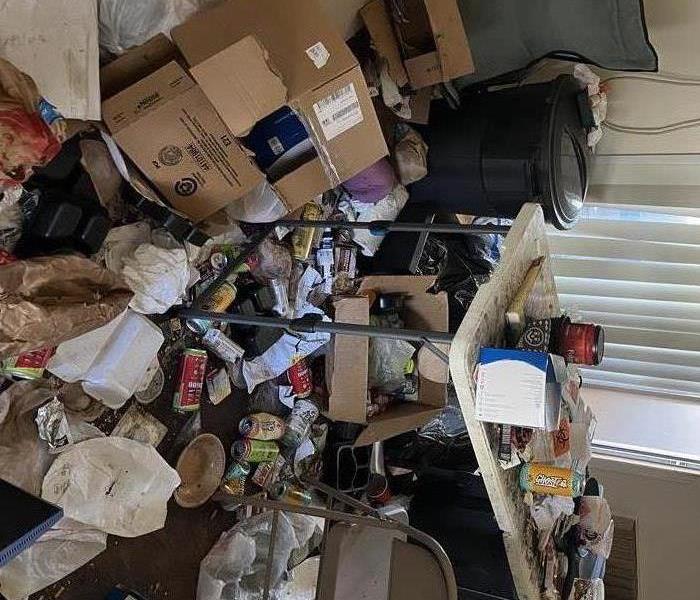 In this blog, we explore how to assess wind damage and navigate the aftermath effectively, providing valuable insights and guidance for homeowners.
In this blog, we explore how to assess wind damage and navigate the aftermath effectively, providing valuable insights and guidance for homeowners.
Strong winds can wreak havoc on homes and buildings, causing significant structural damage. Assessing and addressing wind damage promptly is vital to ensure the safety of occupants and prevent further deterioration. In this blog, we will explore how to assess wind damage and navigate the aftermath effectively, providing valuable insights and guidance for homeowners.
Safety First
Before assessing any damage, prioritize safety. Make sure the immediate danger has passed and it is safe to enter the premises. Watch out for potential hazards such as downed power lines, unstable structures, or debris. If there are any concerns about the stability of the building, evacuate immediately and seek professional assistance.
Exterior Assessment
Begin by conducting an exterior assessment of your property. Look for visible signs of wind damage, including:
- Roof: Check for missing or damaged shingles, loose or dented flashing, or displaced tiles. Pay attention to any areas where the roof might have lifted or peeled back, as these are vulnerable spots for water intrusion.
- Siding and Facade: Inspect the siding, stucco, or brick facade for cracks, chips, or loosened sections. Strong winds can dislodge siding materials, compromising the structure's integrity and leaving it vulnerable to further damage.
- Windows and Doors: Examine windows and doors for cracks, broken glass, or frames that have pulled away from the structure. Damaged windows and doors can compromise security and lead to water damage if not addressed promptly.
- Exterior Structures: Assess other elements such as fences, awnings, and outbuildings for damage. These structures may have experienced wind stress or could have become projectiles during the storm.
Interior Assessment
Once the external assessment is complete and deemed safe, proceed to inspect the interior of the building. Look for the following signs of wind damage:
- Water Intrusion: Check for signs of water damage, including stains, discoloration, or moisture on walls, ceilings, and floors. High winds can cause gaps in the building envelope, allowing water to enter and potentially lead to mold growth and structural decay.
- Cracks and Shifts: Look for new cracks in walls, ceilings, or floors, as well as any noticeable shifts in the structure. Wind pressure can cause structural elements to move, leading to cracks or gaps that compromise stability.
- Damaged Electrical Systems: Assess the electrical system for any visible damage, such as exposed wires, broken outlets, or non-functioning fixtures. If you suspect any electrical damage, seek professional assistance and refrain from attempting to fix it yourself.
Engage Professionals
For a comprehensive assessment of structural wind damage, it is essential to engage professionals. Turn to trained experts who can assess the severity of the damage and provide guidance on necessary repairs.
- Structural Engineers: Consult with a structural engineer to evaluate the extent of the damage and provide a detailed assessment. They can determine if the building is structurally sound and recommend appropriate repairs or reinforcements.
- Restoration Professionals: A professional restoration company like SERVPRO® can provide expertise in addressing water damage, mold remediation, and structural repairs. Their skilled technicians can conduct a thorough evaluation of the damage and execute necessary restoration procedures to ensure your home is safe and habitable.
Remember to document all the damage with photographs and detailed notes, as this information will be valuable for insurance claims and the restoration process. By promptly addressing wind damage and seeking support from trusted professionals like SERVPRO, you can protect your property and restore it to its pre-storm condition.
In Conclusion
Assessing wind damage and its aftermath requires a methodical approach and professional expertise. Prioritize safety, conduct a thorough evaluation of the exterior and interior, and engage reputable professionals for guidance. By promptly addressing structural wind damage and following the recommended repairs, you can ensure the safety and integrity of your home with the help of trusted experts like SERVPRO.
How to Handle Smoke Damage to Clothing and Personal Belongings
4/17/2024 (Permalink)
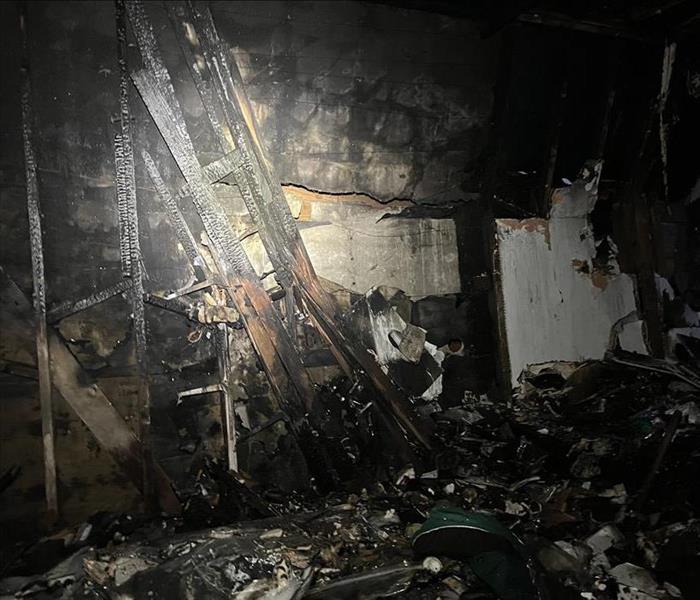 In this blog, we will explore the steps to remove smoke damage from clothing and personal belongings.
In this blog, we will explore the steps to remove smoke damage from clothing and personal belongings.
When a fire occurs, the damage caused by smoke extends beyond the structure and can affect personal belongings. Smoke can cling to clothing and other items, leaving behind unpleasant odors and discoloration. Knowing how to effectively handle smoke damage to clothing and personal belongings is crucial for successful fire damage restoration. In this blog, we will explore the steps to remove smoke damage from clothing and personal belongings. By following these tips, homeowners can restore their valued possessions to their pre-fire condition.
Remove Items from the Affected Area
As soon as it is safe to do so, remove smoke-damaged clothing and personal belongings from the affected area. This prevents further exposure to smoke and minimizes cross-contamination with other items. Take caution to avoid spreading soot and ash throughout the house while relocating the items.
Sort and Prioritize
Sort the smoke-damaged items into different categories based on material types and degree of damage. Prioritize delicate and valuable items that may require specialized cleaning methods. This organization will help streamline the cleaning process and ensure that each item receives the appropriate treatment.
Shake or Vacuum Off Loose Soot
Before attempting any cleaning techniques, gently shake or vacuum off loose soot particles from the surfaces of the clothing and personal belongings. Use a vacuum cleaner with a brush attachment or a soft brush to minimize the risk of causing further damage.
Dry Cleaning for Delicate and Valuable Items
Delicate fabrics, such as silk, wool, or cashmere, often require professional dry cleaning to remove smoke damage safely. Consult a reputable dry cleaning service experienced in handling fire-damaged garments. Inform the specialists about the fire damage beforehand to ensure they apply the appropriate restoration techniques.
Washing Machine for Machine-Washable Items
For machine-washable items, begin by reading the care labels on each garment and following the recommended cleaning instructions. Use a high-quality detergent formulated for removing tough stains and odors. Avoid overcrowding the washing machine to allow for proper agitation and thorough cleaning. Wash the smoke-damaged items separately from unaffected clothing to prevent contamination.
Specialty Cleaning for Non-Washable Items
Certain items, such as leather goods, fur, or delicate accessories, may not be suitable for traditional washing methods. Consult with professionals who specialize in restoring such items. They possess the expertise and equipment necessary to clean and restore non-washable items, ensuring they are free from smoke damage and odors.
Ozone Treatment for Lingering Odors
Persistent smoke odors can be challenging to eliminate, especially from porous materials. Ozone treatment is a highly effective method that uses ozone (O3) gas to neutralize the odors at the molecular level. This process should only be performed by professionals experienced in ozone treatment to ensure safe and proper application.
Handling smoke damage to clothing and personal belongings requires careful attention and proper techniques. By promptly removing items from the affected area, sorting and prioritizing, and employing appropriate cleaning methods, homeowners can restore their valued possessions to their pre-fire condition. Dry cleaning, machine washing, specialty cleaning, and ozone treatment are effective strategies for dealing with smoke damage. For a seamless and successful fire damage restoration process, consider seeking professional assistance from certified experts like SERVPRO®. They have the knowledge, experience, and resources to handle smoke damage to clothing and personal belongings, ensuring thorough restoration and peace of mind.
How Water Damage and Mold Go Hand in Hand
3/15/2024 (Permalink)
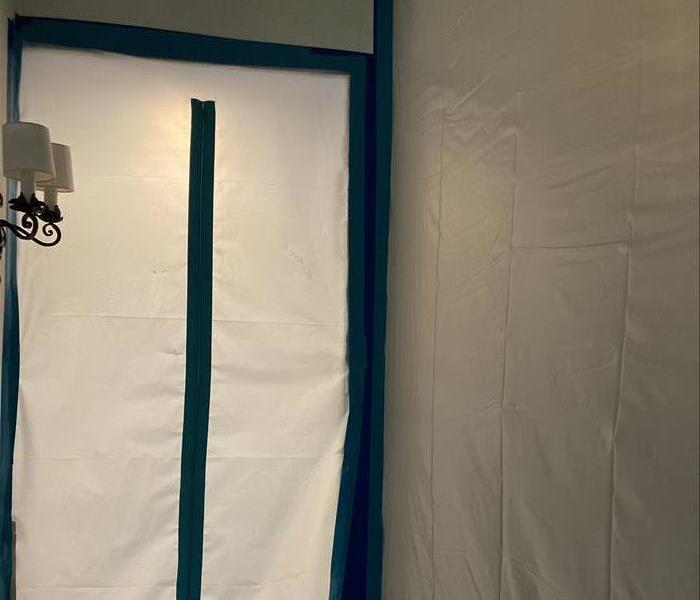 Understanding this dynamic duo is key to addressing water damage promptly and mitigating the risk of mold growth in your home.
Understanding this dynamic duo is key to addressing water damage promptly and mitigating the risk of mold growth in your home.
Water damage in residential settings is more than just an inconvenience; it often brings an unwelcome companion — mold. In this blog, we'll delve into why residential water damage and mold seem to go hand in hand, shedding light on the interconnected issues that homeowners may face. Understanding this dynamic duo is key to addressing water damage promptly and mitigating the risk of mold growth in your home.
1. Moisture as the Catalyst
Water damage creates the ideal breeding ground for mold by introducing excess moisture into the equation. Whether it's a burst pipe, roof leak, or flooding, the lingering moisture becomes a catalyst for mold spores to thrive and multiply.
2. Timing is Everything
Mold is opportunistic and swift, often appearing within 24 to 48 hours after water damage occurs. The quick onset of mold growth highlights the urgency of addressing water damage quickly to prevent a potential mold infestation.
3. Hidden Havens for Mold
Water damage doesn't just affect visible surfaces; it can seep into hidden nooks and crannies, under flooring and behind walls, providing secluded areas for mold to grow. This makes it essential to thoroughly assess and address water damage to prevent mold from establishing hidden colonies.
4. Material Matters
Certain building materials, such as drywall and insulation, are particularly susceptible to water absorption. Once saturated, these materials become a breeding ground for mold. Understanding the materials in your home and their vulnerability to water damage is crucial in preventing mold issues.
5. Neglected Spaces
Areas that often go unnoticed, like basements, crawl spaces, and attics, are more susceptible to water damage and subsequent mold growth. Regular inspections of these neglected spaces can help identify and address water damage before mold has a chance to take hold.
6. Humidity Amplifies Mold Risk
After water damage occurs, the residual humidity in the air can further amplify the risk of mold growth. Adequate ventilation and dehumidification are essential in reducing humidity levels and mitigating the potential for mold infestation.
7. DIY Cleanup Risks
While DIY water damage cleanup may seem cost-effective, improper drying and cleaning techniques can leave lingering moisture, setting the stage for mold growth. Professional water damage restoration services ensure thorough and effective cleanup, minimizing the risk of subsequent mold issues.
8. Continuous Monitoring
Even after water damage is addressed, continuous monitoring is crucial. Regular checks for signs of mold growth, such as musty odors or visible patches, can help catch potential issues early and prevent widespread infestation.
Understanding the relationship between residential water damage and mold empowers homeowners to take proactive steps to protect their homes. Prompt attention to water damage, thorough cleanup, and ongoing monitoring are key elements in breaking the cycle and maintaining a mold-free living environment.






 24/7 Emergency Service
24/7 Emergency Service
